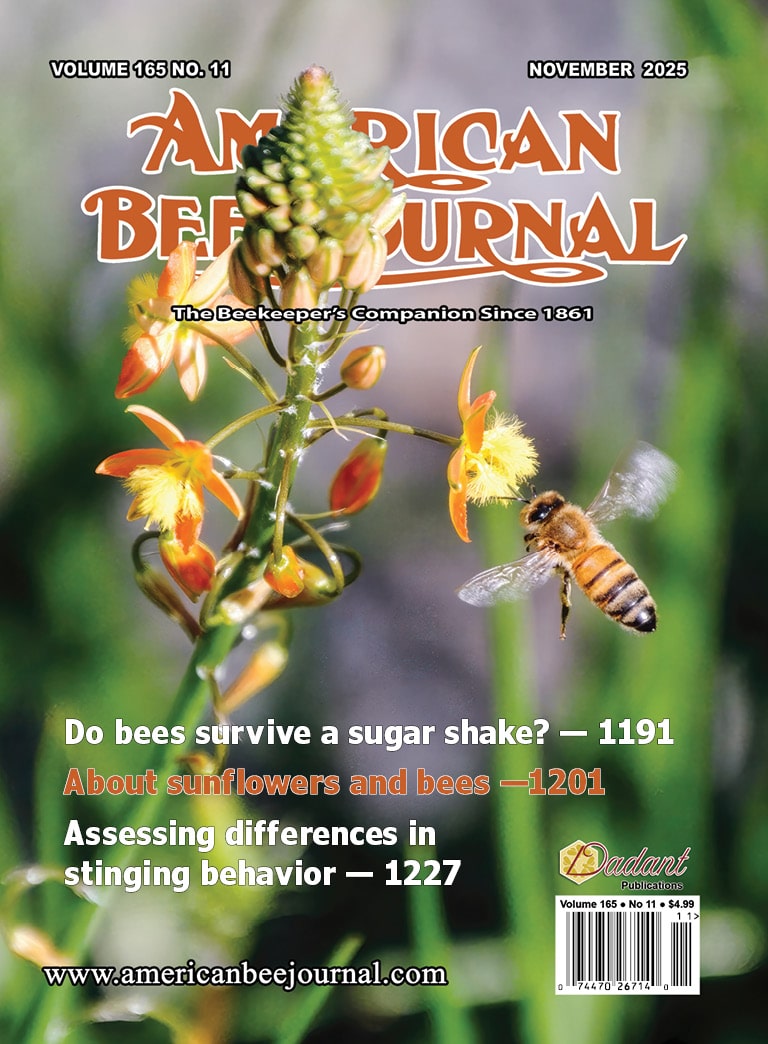Archived Columns
My Two-Queen Hive Experiment
It is early spring as I write this article. I am working on bee equipment. This season I have decided to do something that I have wanted to do for a long time. I will build a long hive. As the saying goes, times (things) change but people don’t. What has changed is that when I refer to a long hive, it is not an African style top-bar hive to which I refer.
The long hive to which I refer is a 2-queen system. All 2-queen systems are complicated in some way or other. This is not the first time I have researched the benefits of a 2-queen systems. However, my first attempt, though successful, was a very difficult system to work with. It did eventually fail in the third season. I gave up on the vertically divided two-queen system as too cumbersome to work with. Basically I split 3 standard hive bodies down the center from bottom board to hive cover. The queens and bees could not cross from the right side to the left side without going out of the dual hive entrance at the bottom.
This 2-queen encumbered hive produced about 3 times as much honey as my single hives during the first season. Re-queening was a nightmare the second season. It was so bad, I skipped it the 3rd season. For two seasons that 2-queen colony out performed everything else in the apiary. Let me tell you right now that 2-queen systems are not movable. You cannot be a migratory beekeeper with 2-queen systems and expect to hold things together. I am not saying it cannot be done, just that most people would not want to move a 2-queen colony.
Since the extra production involved with my first attempt at 2-queen systems proved successful, I have always wanted to try the long hive. I believe it will be easier to manage as long as you do not wish to move it. The bottom board is 4 feet long and 24 inches wide. I made mine out of 2 x 4 and 2 x 6 lumber. I used a 2 x 6 for the front so that it would make a landing board as you can see in picture one. The screen bottom was stapled to the frame of the bottom board. This bottom board must support 3 standard hive bodies so it must be stout. You will notice the entrances (there are two) will be only through the two outside hive bodies. The central hive body is only open through the top. In other words, bees from both outside colonies can build comb in the center of the hive, but also in the supers placed above.
The two separate colonies have queen excluders framed from bottom board to the hive cover. The 3 covers in this case will be a single plank of 3/4” plywood. I put on two 1×2 boards to cover the seam between the plywood covers. This keeps the rain from going into the hives. The queens are confined to one or the other side of this threebox system. Only the worker bees can go into the center box. This center will be for extra space and extra honey. It is interesting that the worker bees will accept one another in this neutral territory, even though they have different queen mothers. A queen excluder is not needed below the supers which are placed over the center of the 2-queen long hive.
Joining the three hive bodies together was a conundrum until the decision was made. The two outer colonies each had two short sides (16 ¾) and one long side (19 ¾) to form the ends. The standard hive bodies had three sides to close the ends. The hive rests went from front to back. Two short sides of a third standard hive body were used for the center box. Instead of long sides, this center box had framed queen excluder material for sides. In order to join 3 short sides for the front and 3 for the back, the dovetailed ends of the center boards were cut off. The outer U-shaped box dovetails were cut off the side that joined the center boards to form a secure joint. I used 4 strips of 1 x 4 lumber to butt join the box sides together with glue and screws. Dadant company’s Ray Latner at the Florida Branch was helpful with the decision on joining the boxes.
The queen excluders were easy to….


